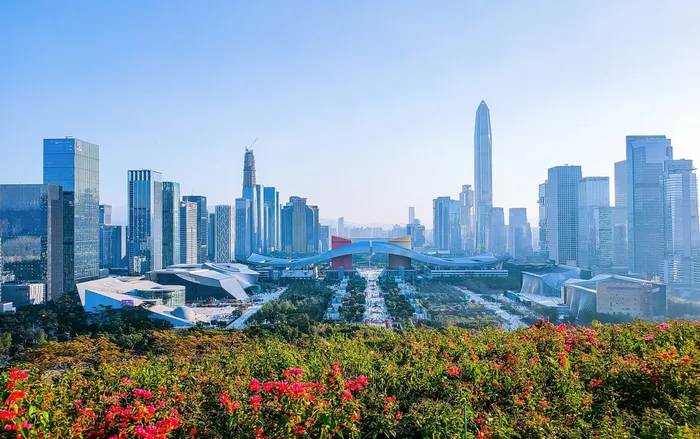Teach a man to fish, or build a megacity

Forty years after being established as China’s first special economic zone, Shenzhen is a symbol of the country’s reform and opening-up. It has transformed from a fishing village to a sprawling industrial and financial megacity. Picture: Charlotte from Pixabay
BACK in 1980, I had some lofty dreams. For example, I would dream of sitting and having a meal in a restaurant with my family – like I saw in the movies – instead of having to buy our meals from the takeaway counter, or through a little window around the corner from the establishment’s main entrance.
I was in Standard five then; a primary school senior, and I dared to dream of a better day, a day that our parents and the other adults whispered about in hushed tones, afraid that the mysterious and sinister “they” would hear the revolutionary ideas being discussed.
Five years later, I was in matric; things had changed. Already I had enjoyed the privilege of sitting down in a steakhouse and, on occasion entering buildings that had previously been off limits to people of … how can I put this? People of “my persuasion”.
Within another five years I had finished college. By this time I was having regular outings to fast food restaurants, and because my skin was of a lighter hue, I would sneak in to watch movies at upmarket cinemas, visit the “posh” pool in the city and generally feel more free, more liberated.
My friends thought it was hilarious, and instead of them being envious and labelling me a “sellout” they would cheer me on as if this “civil disobedience” of mine was actually contributing to the fight against Apartheid.
Another half a decade later, and the long-awaited Shangri-La was upon us; it was at this time that my dreams reached a peak, and I actually started believing that there was no glass ceiling.
Of course, close to 30 years later, things have not quite worked out as I dreamed. On the contrary, after that brief peak in the 90s, when South Africa was the world’s darling democracy, things have slowed down quite a bit. In fact, things have unravelled pretty quickly and very noticeably over the last three decades.
Now, by contrast, at the time when my highest ambition was a meal at a restaurant in the Diamond City’s Central Business District, somewhere far, far away in the Far East, a leader called Deng Xiaoping designated a rural fishing village called Shenzhen to be one of China’s first Special Economic Zones (SEZ).
Deng Xiaoping had a plan to attract foreign investment into the region and stimulate economic growth by offering favourable business conditions. It must be noted that at the time Chinese people were using Shenzhen as a gateway to get to the British-ruled colony of Hong Kong, where life was easier and there was more prosperity.
At the time that I was smacking my lips for a hamburger, Shenzhen’s population was less than 30,000 – that’s the current population of the town of Kuruman in the Northern Cape.
However, with their plan in place, the will to succeed and a large, motivated labour force, Shenzhen’s SEZ status triggered an influx of migrants seeking employment opportunities.
By the mid-1990s – when I had achieved the feat of sneaking into cinemas and leisure resorts – the population of Shenzhen had soared to over three million.
Today, as I lament the crumbling infrastructure of our city, and country and the downward spiral of our people’s hopes and dreams, the population of the city of Shenzhen exceeds 12 million.
Look, of course this Chinese city is not Utopia; it had its problems, big ones too. For example, in December 2015, a large hill of construction debris became unstable, causing a landslide that buried or destroyed 33 buildings.
The landslide covered an area larger than 70 football fields with up to 32 feet of red mud, engulfing apartments, worker dormitories, and factory buildings. Many people lost their lives.
Investigations revealed that developers had ignored disposal regulations in their haste to complete construction projects.
Not only that, but the bump in production and development meant that factories have left the region’s rivers polluted, and, with the city’s footprint simply ballooning, cars replaced bicycles, bringing with them traffic congestion and air pollution. By 2016, residents were dealing with average commute times of up to an hour and a half.
On top of all of this, living and working conditions for migrant workers was reported to be far from ideal. In 2010, Shenzhen made international headlines when there was a spate of suicides by workers at a tech manufacturing plant that supplied a well-known Western tech company.
So let’s not fool ourselves into thinking that development, growth and prosperity is a walk in the park. No, on the contrary, it takes planning, commitment, investment, strong leadership and a motivated, dedicated workforce.
However, don’t get me wrong; I am not a cheerleader for China. I am not expecting our government to come up with a plan, find money and develop South African megacities overnight.
What I am saying is that it’s lamentable, even tragic that while on one side of the planet a fishing village grew into a megacity in 30 years, on the other end of the world, an entire country has fallen into disrepair over the same span of time.
And the people? I wonder if the people of South Africa still have lofty dreams of a better life.
I would love to believe that, though it is in short supply and dwindling, there are still organisations and operations and people in South Africa that can make a difference, a positive difference, by pouring resources, ideas and wisdom into meaningful, uplifting and sustainable projects that could at least keep the bottom from falling out of our country.
Related Topics: